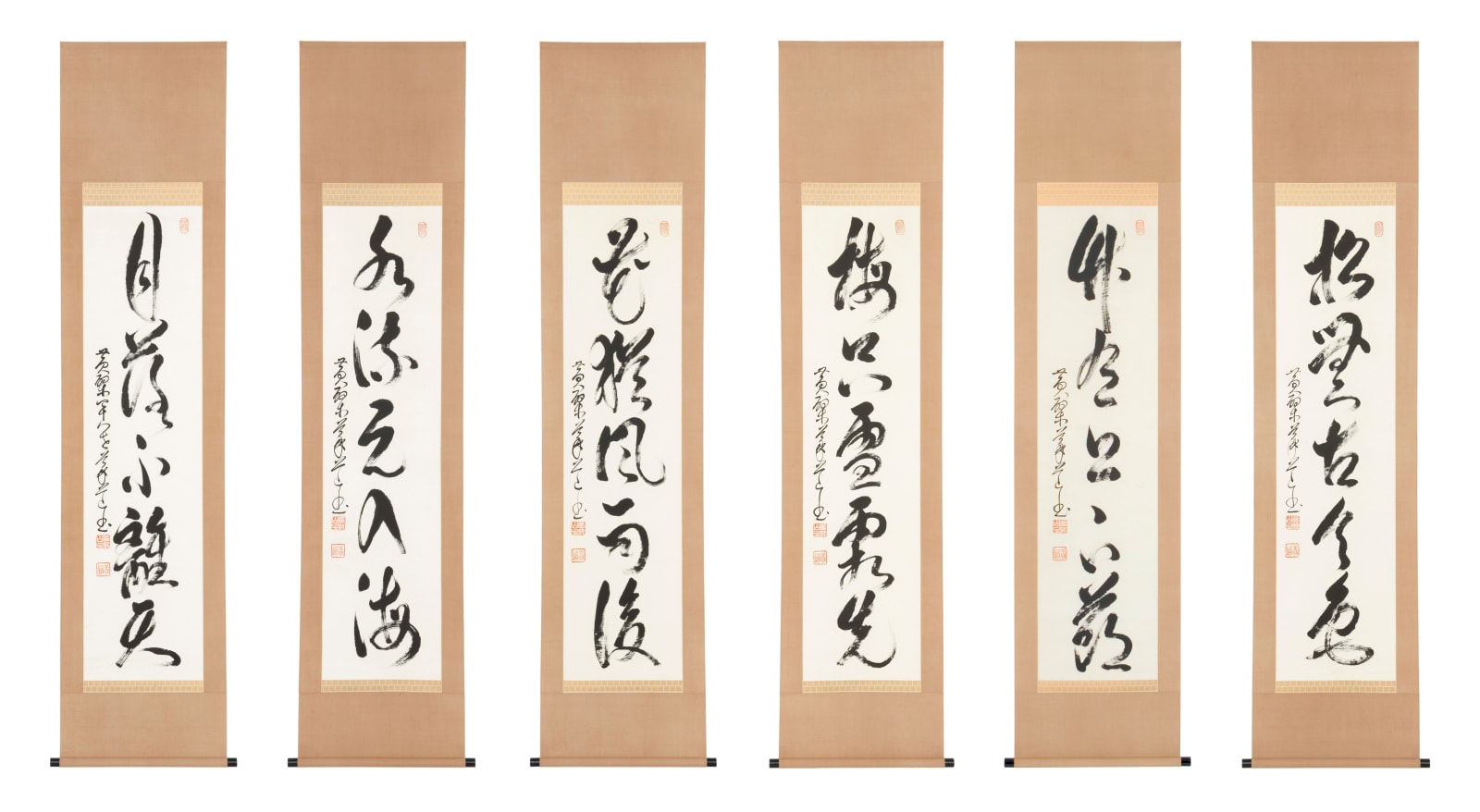Gidō Kōkan 義道弘貫
Six Zen Calligraphies, 1910s-1930s
Ink on paper
Image size each scroll 53¼ x 13¼ in. (135 x 33.5 cm)
Overall size each scroll 80¼ x 18½ in. (204 x 47 cm)
Overall size each scroll 80¼ x 18½ in. (204 x 47 cm)
T-0965
Each signed Ōbaku Gidō sho (Written by Ōbaku Gidō) and sealed Ōbakuzanshu (Master of Mount Ōbaku) and Gidō. Each scroll comes with a fitted kiri-wood box Gidō Kōkan was the...
Each signed Ōbaku Gidō sho (Written by Ōbaku Gidō) and sealed Ōbakuzanshu (Master of Mount Ōbaku) and Gidō.
Each scroll comes with a fitted kiri-wood box
Gidō Kōkan was the 48th Abbot of Manpukuji Temple in Kyoto, headquarters of the Ōbaku Sect of Rinzai Zen.
The calligraphies comprise six well-known Chinese ten-character Zen couplets, and read as follows (from right to left):
1 and 2: Pine trees do not change their color with age; bamboo has nodes both above and below ground.
3 and 4: Plum blossoms bud before snow and frost; their flowers are fragrant after wind and rain.
5 and 6: Rivers flow but once were in the ocean; the moon sinks but does leave the heavens.
Each scroll comes with a fitted kiri-wood box
Gidō Kōkan was the 48th Abbot of Manpukuji Temple in Kyoto, headquarters of the Ōbaku Sect of Rinzai Zen.
The calligraphies comprise six well-known Chinese ten-character Zen couplets, and read as follows (from right to left):
1 and 2: Pine trees do not change their color with age; bamboo has nodes both above and below ground.
3 and 4: Plum blossoms bud before snow and frost; their flowers are fragrant after wind and rain.
5 and 6: Rivers flow but once were in the ocean; the moon sinks but does leave the heavens.



